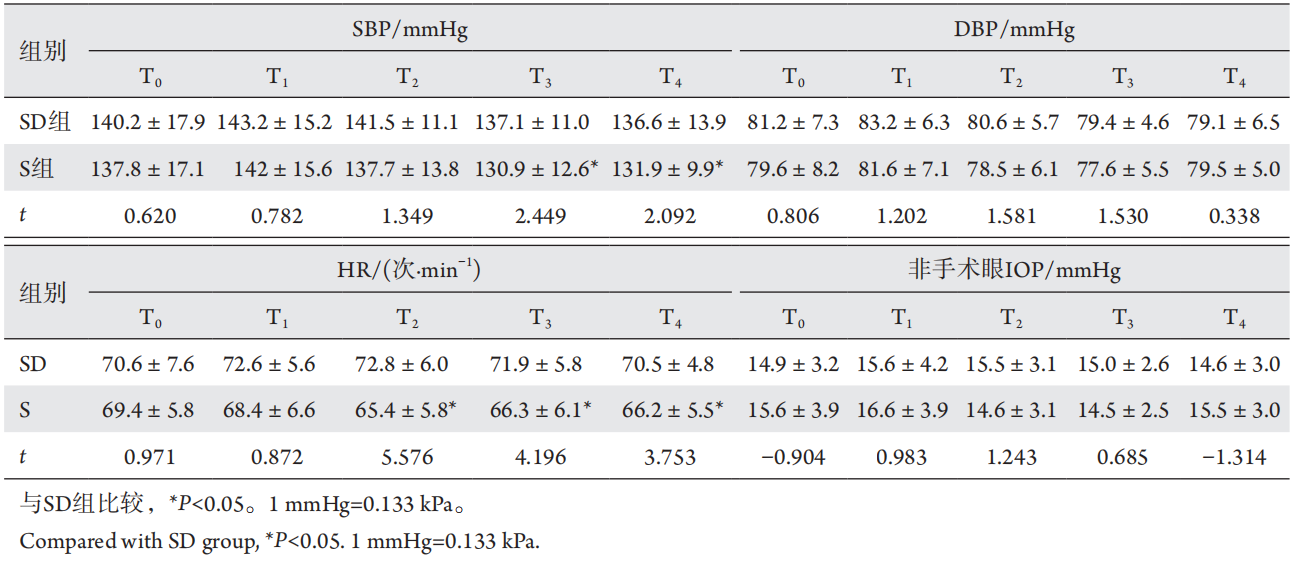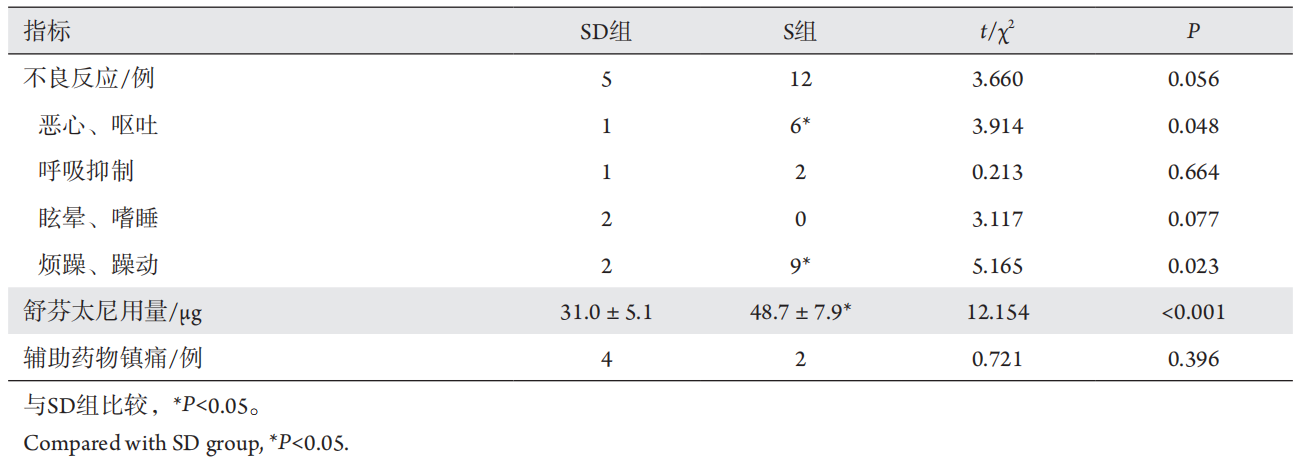1、李维娜, 梁宗宝, 邓艺萍, 等. 睫状体光凝术与小梁切除术治疗原发性急性闭角型青光眼持续性高眼压疗效比较[ J]. 中华实验眼科杂志, 2014, 32(3): 266-269.
LI Weina, LIANG Zongbao, DENG Yiping, et al. Comparison of the efficacy between cyclophotocoagulation and trabeculectomy for primary acute angle-closure glaucoma with persistent ocular hypertension[ J]. Chinese Journal of Experimental Ophthalmology, 2014, 32(3): 266-269.李维娜, 梁宗宝, 邓艺萍, 等. 睫状体光凝术与小梁切除术治疗原发性急性闭角型青光眼持续性高眼压疗效比较[ J]. 中华实验眼科杂志, 2014, 32(3): 266-269.
LI Weina, LIANG Zongbao, DENG Yiping, et al. Comparison of the efficacy between cyclophotocoagulation and trabeculectomy for primary acute angle-closure glaucoma with persistent ocular hypertension[ J]. Chinese Journal of Experimental Ophthalmology, 2014, 32(3): 266-269.
2、Schuster AK, Erb C, Hoffmann EM, Dietlein T, et al. The diagnosis and treatment of glaucoma[ J]. Dtsch Arztebl Int, 2020, 117(13): 225-234.Schuster AK, Erb C, Hoffmann EM, Dietlein T, et al. The diagnosis and treatment of glaucoma[ J]. Dtsch Arztebl Int, 2020, 117(13): 225-234.
3、El-Saied HMA, Abdelhakim MASE. Different surgical modalities for management of uveitic glaucoma: 2 year comparative study[ J]. Acta Ophthalmol, 2022, 100(1): e246-e252.El-Saied HMA, Abdelhakim MASE. Different surgical modalities for management of uveitic glaucoma: 2 year comparative study[ J]. Acta Ophthalmol, 2022, 100(1): e246-e252.
4、Kweon DE, Koo Y, Lee S, et al. Postoperative infusion of a low dose of dexmedetomidine reduces intravenous consumption of sufentanil in patient-controlled analgesia[ J]. Korean J Anesthesiol, 2018, 71(3): 226-231.Kweon DE, Koo Y, Lee S, et al. Postoperative infusion of a low dose of dexmedetomidine reduces intravenous consumption of sufentanil in patient-controlled analgesia[ J]. Korean J Anesthesiol, 2018, 71(3): 226-231.
5、 Liu F, Li TT, Yin L, et al. Analgesic effects of sufentanil in combination with flurbiprofen axetil and dexmedetomidine after
open gastrointestinal tumor surgery: a retrospective study[ J]. BMC Anesthesiol, 2022, 22(1): 130. Liu F, Li TT, Yin L, et al. Analgesic effects of sufentanil in combination with flurbiprofen axetil and dexmedetomidine after
open gastrointestinal tumor surgery: a retrospective study[ J]. BMC Anesthesiol, 2022, 22(1): 130.
6、Tang C, Hu Y, Zhang Z, et al. Dexmedetomidine with sufentanil in intravenous patient-controlled analgesia for relief from postoperative pain, inflammation and delirium after esophageal cancer surgery[ J]. Biosci Rep, 2020, 40(5): BSR20193410.Tang C, Hu Y, Zhang Z, et al. Dexmedetomidine with sufentanil in intravenous patient-controlled analgesia for relief from postoperative pain, inflammation and delirium after esophageal cancer surgery[ J]. Biosci Rep, 2020, 40(5): BSR20193410.
7、Rasheed AM, Amirah MF, Abdallah M, et al. Ramsay sedation scale and richmond agitation sedation scale: A cross-sectional study[ J]. Dimens Crit Care Nurs, 2019, 38(2): 90-95.Rasheed AM, Amirah MF, Abdallah M, et al. Ramsay sedation scale and richmond agitation sedation scale: A cross-sectional study[ J]. Dimens Crit Care Nurs, 2019, 38(2): 90-95.
8、Li TT, Xiong LL, Huang J, et al. The effects of body mass index on the use of patient-controlled intravenous analgesia after open gastrointestinal tumor surgery: A retrospective analysis[ J]. J Pain Res,2020, 13: 2673-2684.Li TT, Xiong LL, Huang J, et al. The effects of body mass index on the use of patient-controlled intravenous analgesia after open gastrointestinal tumor surgery: A retrospective analysis[ J]. J Pain Res,2020, 13: 2673-2684.
9、Thong ISK, Jensen MP, Miró J, et al. The validity of pain intensity measures: what do the NRS, VAS, VRS, and FPS-R measure?[ J]. Scand J Pain, 2018, 18(1): 99-107.Thong ISK, Jensen MP, Miró J, et al. The validity of pain intensity measures: what do the NRS, VAS, VRS, and FPS-R measure?[ J]. Scand J Pain, 2018, 18(1): 99-107.
10、Rasheed AM, Amirah MF, Abdallah M, et al. Ramsay sedation scale and richmond agitation sedation scale: A cross-sectional study[ J]. Dimens Crit Care Nurs, 2019, 38(2): 90-95.Rasheed AM, Amirah MF, Abdallah M, et al. Ramsay sedation scale and richmond agitation sedation scale: A cross-sectional study[ J]. Dimens Crit Care Nurs, 2019, 38(2): 90-95.
11、Deol HS, Surani SR, Udeani G. Inter-rater reliability of the ramsay sedation scale for critically-ill intubated patients[ J]. Cureus, 2019, 11(10): e6021.Deol HS, Surani SR, Udeani G. Inter-rater reliability of the ramsay sedation scale for critically-ill intubated patients[ J]. Cureus, 2019, 11(10): e6021.
12、Yeh SJ, Chen KH, Kuang TM, et al. Comparison of the iCare, Tono-Pen, non-contact airpuff, and Goldmann applanation tonometers in eyes with corneal edema after penetrating keratoplasty[ J]. J Chin Med Assoc, 2021, 84(3): 320-325.Yeh SJ, Chen KH, Kuang TM, et al. Comparison of the iCare, Tono-Pen, non-contact airpuff, and Goldmann applanation tonometers in eyes with corneal edema after penetrating keratoplasty[ J]. J Chin Med Assoc, 2021, 84(3): 320-325.
13、Rojas CD, Reed DM, Moroi SE. Usefulness of Icare home in telemedicine workflow to detect real-world intraocular pressure
response to glaucoma medication change[ J]. Ophthalmol Glaucoma, 2020, 3(5): 403-405.Rojas CD, Reed DM, Moroi SE. Usefulness of Icare home in telemedicine workflow to detect real-world intraocular pressure
response to glaucoma medication change[ J]. Ophthalmol Glaucoma, 2020, 3(5): 403-405.
14、Wang Y, Fang X, Liu C, et al. Impact of intraoperative infusion and postoperative PCIA of dexmedetomidine on early breastfeeding after elective cesarean section: A randomized double-blind controlled trial[ J]. Drug Des Devel Ther, 2020, 14: 1083-1093.Wang Y, Fang X, Liu C, et al. Impact of intraoperative infusion and postoperative PCIA of dexmedetomidine on early breastfeeding after elective cesarean section: A randomized double-blind controlled trial[ J]. Drug Des Devel Ther, 2020, 14: 1083-1093.
15、Meuser T, Nardi-Hiebl S, Eberhart L, et al. Staff time requirements for postoperative pain management: Comparison of sufentanil sublingual tablet system and intravenous patient-controlled analgesia[ J]. J Opioid Manag, 2019, 16(1): 33-39.Meuser T, Nardi-Hiebl S, Eberhart L, et al. Staff time requirements for postoperative pain management: Comparison of sufentanil sublingual tablet system and intravenous patient-controlled analgesia[ J]. J Opioid Manag, 2019, 16(1): 33-39.
16、Hu Q, Wang Q, Han C, et al. Sufentanil attenuates inflammation and oxidative stress in sepsis-induced acute lung injury by downregulating KNG1 expression[ J]. Mol Med Rep, 2020, 22(5): 4298-4306.Hu Q, Wang Q, Han C, et al. Sufentanil attenuates inflammation and oxidative stress in sepsis-induced acute lung injury by downregulating KNG1 expression[ J]. Mol Med Rep, 2020, 22(5): 4298-4306.
17、Jiang M, Sun Q, Liu G, et al. Efficacy of dexmedetomidine in reducing post-operative pain and improving the quality of recovery in patients with burn wounds undergoing tangential excision skin grafting[ J]. Exp Ther Med, 2019, 17(3): 1776-1782.Jiang M, Sun Q, Liu G, et al. Efficacy of dexmedetomidine in reducing post-operative pain and improving the quality of recovery in patients with burn wounds undergoing tangential excision skin grafting[ J]. Exp Ther Med, 2019, 17(3): 1776-1782.
18、Sun S, Guo Y, Wang T, et al. Analgesic effect comparison between nalbuphine and sufentanil for patient-controlled intravenous analgesia after cesarean section[ J]. Front Pharmacol, 2020, 11: 574493.Sun S, Guo Y, Wang T, et al. Analgesic effect comparison between nalbuphine and sufentanil for patient-controlled intravenous analgesia after cesarean section[ J]. Front Pharmacol, 2020, 11: 574493.
19、Liu X, Hu X, Li R, et al. Combination of post-fascia iliaca compartment block and dexmedetomidine in pain and inflammation control after total hip arthroplasty for elder patients: a randomized control study[ J]. J Orthop Surg Res, 2020, 15(1): 42.Liu X, Hu X, Li R, et al. Combination of post-fascia iliaca compartment block and dexmedetomidine in pain and inflammation control after total hip arthroplasty for elder patients: a randomized control study[ J]. J Orthop Surg Res, 2020, 15(1): 42.
20、Lee S. Dexmedetomidine: present and future directions[ J]. Korean J Anesthesiol, 2019, 72(4): 323-330.Lee S. Dexmedetomidine: present and future directions[ J]. Korean J Anesthesiol, 2019, 72(4): 323-330.
21、Oh SK, Lee IO, Lim BG, et al. Comparison of the analgesic effect of sufentanil versus fentanyl in intravenous patient-controlled analgesia after total laparoscopic hysterectomy: A randomized, double-blind, prospective study[ J]. Int J Med Sci, 2019, 16(11): 1439-1446.Oh SK, Lee IO, Lim BG, et al. Comparison of the analgesic effect of sufentanil versus fentanyl in intravenous patient-controlled analgesia after total laparoscopic hysterectomy: A randomized, double-blind, prospective study[ J]. Int J Med Sci, 2019, 16(11): 1439-1446.
22、Collins LK, Pande LJ, Chung DY, et al. Trends in the medical supply of fentanyl and fentanyl analogues: United States, 2006 to 2017[ J]. Prev Med, 2019, 123: 95-100.Collins LK, Pande LJ, Chung DY, et al. Trends in the medical supply of fentanyl and fentanyl analogues: United States, 2006 to 2017[ J]. Prev Med, 2019, 123: 95-100.






